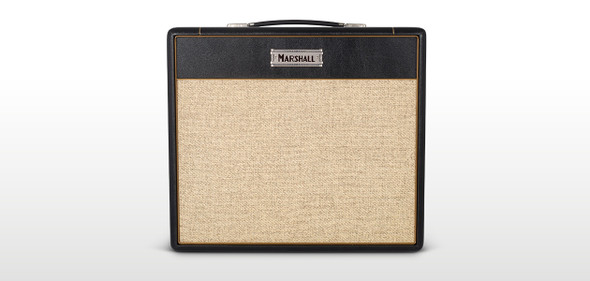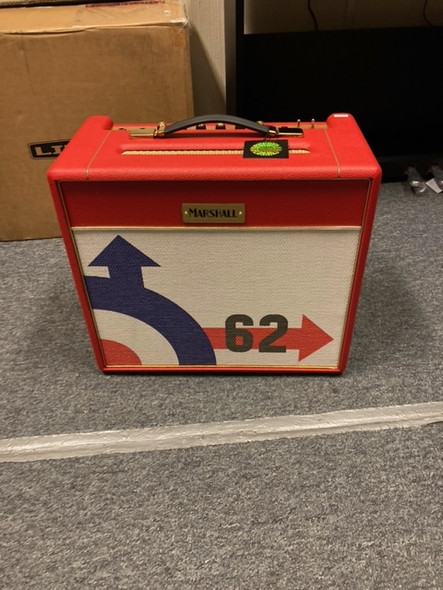Guitar Amplifiers
We carry the leading brands in electric guitar amplifiers from Marshall, Fender, Orange, Blackstar, Roland, Boss and Laney.
- Product
- Qty in Cart
- Quantity
- Price
- Subtotal
-
On Sale


EVH 5150III® 15W LBX Guitar Amplifier Head
EVH
MSRP: £699.00Now: £599.00Was: £699.00A mighty sonic force to be reckoned with, the EVH 5150III® 15W LBX is an easy-to-carry "lunchbox" guitar amp head - but don't let its diminutive size fool you; it's packed to the gills with searing tone!Armed with five ECC83S (12AX7) and two EL84...MSRP: £699.00Now: £599.00Was: £699.00 -


Boss Katana-50 GEN 3 Guitar Amplifier
Boss
£279.00KATANA-50 GEN 3GUITAR AMPLIFIER The Next Generation of a Modern Classic With Katana Gen 3, the acclaimed BOSS stage amplifier series evolves to take your guitar ambitions to the next level. New Tube Logic enhancements enrich the core platform with even...£279.00 -
On Sale

Fender Champion 50XL Guitar Amplifier Combo
Fender
MSRP: £259.00Now: £199.00Was: £259.00Fender Champion 50XL Guitar Amplifier Combo A giggable 50w amp, crammed with selectable FX and amp voices perhaps the Fender Champion 50XL is the on for you! Boasting a decent size and low weight, Twin Channels Channel 1 features Fender’s...MSRP: £259.00Now: £199.00Was: £259.00 -
On Sale


Guitar Practice Amplifier With Blue Tooth
MSRP: £74.99Now: £64.99Was: £74.99Guitar Practice Amplifier With Blue Tooth By Chord A great little 10 watt practice amplifier with blue tooth. Classically styled guitar amplifier combo in a vinyl covered cabinet with metal corner protectors and basket-weave style grille cloth. Front...MSRP: £74.99Now: £64.99Was: £74.99 -


Marshall MG15R Gold 15W Guitar Practice Amplifier
Marshall
£119.00Marshall MG15R Gold 15W Guitar Practice Amplifier A compact 15W amplifier with Reverb that packs plenty of power. The 8” speaker delivers a great sound for practice but can also hold its own in front of a small crowd. These amps bring an added...£119.00 -


Marshall ST20HC Studio JTM 20W Valve Combo
Marshall
£999.00ST20C The first JTM amp created a legendary sound that inspired generations of musicians. In honour of that, the ST20C brings the iconic 60’s tone that initially launched Marshall to the present day, in a more compact format. Whether you’re...£999.00 -


Marshall ST112 Studio JTM 1X12" Guitar Amp Cabinet
Marshall
£449.00ST112 The ST112 brings the iconic tone that sprung Marshall to the forefront of rock ’n’ roll in the 60s to today. This 1x12" cab has been designed to be paired with the ST20H to create a small but perfectly formed vintage rig, or...£449.00 -


Marshall ST20H Studio JTM 20W Valve Amp Head
Marshall
£849.00ST20H The unrivalled number one is here, just smaller. Reproducing the legendary, warm and smooth tones of the original Marshall JTM, the Studio JTM packs a punch. Swap between 20W and 5W at the flick of a switch and let the era-defining sound of the...£849.00 -


Marshall Design Store 'Target 62' SV20C Studio Vintage Combo Red Levant
Marshall
MSRP: £1,099.00£999.00SV20C Finished in Design Store Red Levant The power of a Plexi in a new portable style. Now the legendary sound of the 1959SLP is yours for the taking, packaged in a 20W combo that you can enjoy at home or in the studio. It’s got the same vintage...MSRP: £1,099.00£999.00 -

Marshall Design Store SV20H Studio Vintage Head with 1974CX Cab Red
Marshall
£1,349.00Marshall SV20H/1974CX Guitar Amp Stack, Ltd Edition Burgundy and Cream SV20H Why should touring artists have all the fun? With the SV20H you can harness the formidable tone of the 1959SLP at home or in the studio. Switch between 20W and 5W at the flick...£1,349.00 -
Out Of Stock

Peavey MAX 126 Bass Guitar Amplifier
Peavey
£109.00Peavey MAX 126 Bass Guitar Amplifier Most practice amps sound like practice amps. The Peavey MAX 126 is an exception. Thanks to TransTube emulation circuitry, it has a rich tone that makes it easy to practice all night. A voicing switch gives you modern...£109.00 -
Out Of Stock

Fender Mustang ™ Micro Headphone Guitar Amplifier
Fender
£99.99Mustang Micro is a complete personal guitar amplifier featuring a wide selection of tones from the wildly popular Mustang series amps. Plug Mustang Micro directly into your guitar, connect your favorite wired headphones, and choose your perfect amp and...£99.99
